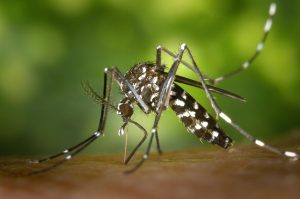Nyagatare: Baboons in danger, residents face wildlife displaced from their habitat
4 min read
By Telesphore KABERUKA
It’s 10:30 a.m. in Nyagatare. In front of a small shop on the town’s outskirts, a large baboon, likely a dominant male, sits calmly, watching customers as if he owns the place. Some passersby turn back in fear. The shopkeeper, Jean Damascène Kalisa, tries to chase it away, but without success. As the animal resists, a few customers throw bananas to distract it. After finishing its meal, the baboon slowly walks away, tail swaying.
This scene is now common in Nyagatare, where baboons have become regular visitors in residential areas. Locals recount the havoc they cause.
“These animals destroy everything. They raid our fields, damage fruit trees, tear roofs off houses, and steal food inside,” says Joseph Sibomana, a resident.
Local shopkeeper Soline Uwamahoro adds that the problem goes beyond property damage:
“Street vendors, especially those selling maize and bananas, are often robbed or attacked. It also frightens women and children. Recently, a woman was injured after being startled by a baboon near Nyagatare Hospital.”
Residents say these encounters began after baboons and other wildlife were expelled from Rwimikinga Forest, their natural habitat, to make way for agriculture and housing.
“The animals didn’t choose to leave, the humans drove them out and took their land,” explains one resident.
According to Thomas Kanyanzira, the situation has become critical:
“Now, these animals wander aimlessly, crossing villages without a fixed habitat. Volunteers have been deployed to keep them from entering the town center.”
Displaced animals without compensation
In Rwanda, land disputes usually involve people. But in Nyagatare, a new kind of conflict is emerging, between humans and animals deprived of their territory. As farmland and housing developments expand into the Imikinga forest, displaced wildlife is left to survive in human spaces, often leading to chaos.
Some locals believe the animals’ rights have been ignored.
“Baboons were here before us. We came with land titles, but what about them? They have nothing left,” laments Emmanuel Mutabaruka.
Édouard Kabera adds: “When humans settled near the forest, the animals were forced out without any support to adapt.”
He continues:
“People say baboons are invading us, but no one admits that we invaded their forest first. When they come back, we chase them, throw stones, even beat them. In truth, we’ve taken away their right to their own home.”
Driving them away is not a long-term solution
To address the growing problem, the Nyagatare District has deployed more than 30 forest guards to drive baboons away when they enter residential zones. But some residents say this only fuels tension and harms the animals.
“When a person is displaced, the law requires compensation. But these animals get nothing, they’re left to suffer and clash with humans,” says Thaddée Semana, a trader from Gakuba, near Imikinga Forest.
Environmental experts like Ange Manishimwe warn of deeper consequences:
“Forcing them away without a sustainable plan harms both the animals and the people.”
The role of RDB in managing the baboon crisis

When contacted by Family Magazine, Telesphore Ngoga, Director of Park Conservation at the Rwanda Development Board (RDB), explained that the conversion of natural habitats into farmland and settlements disrupts animal behavior.
“Much of the Umutara region was once natural land inhabited by wildlife. With ongoing development, species such as baboons now live closer to human communities,” he says.
Ngoga emphasizes the need for cooperation between authorities and residents:
“Measures to manage baboon-related issues will only work if local communities actively collaborate with the government and partners like REMA and RWCA.”
He also mentions an ongoing project in the Umuvumba Valley aimed at providing refuge for displaced wildlife: “We hope this initiative will offer a lasting solution.”
Responding to claims that animals receive no compensation, Ngoga clarifies that the government aims to balance human welfare with biodiversity protection.
“With limited land and a growing population, we must plan its use wisely,keeping in mind what will sustain future generations.”
He further advises communities to understand and adapt to wildlife behavior:
“People living near baboon territories should learn how to coexist safely, keep homes closed, avoid leaving food waste around, and support projects that turn wildlife into a resource rather than a nuisance.”
Finally, Ngoga reminds residents that humans affected by baboon damage are entitled to compensation:“Anyone who suffers losses can file a claim through local authorities, who assess and report the damages for compensation.”
A conflict of survival
What began as a forest management issue has evolved into a daily struggle for coexistence. In Nyagatare, the line between wilderness and civilization is fading fast, and until a balance is found, both baboons and humans remain caught in a battle neither chose to start.




